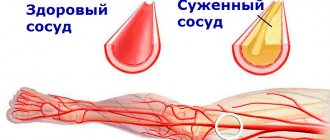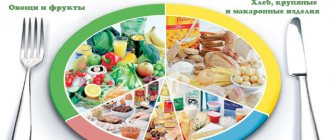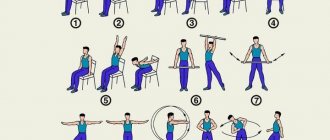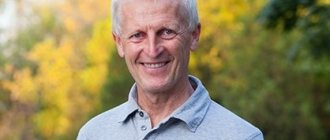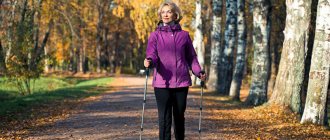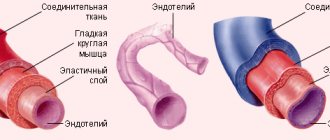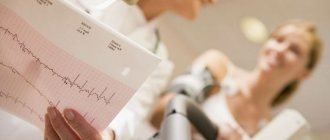Previously, psychosomatics was considered as a direction in psychology. Through it, experts explained the origin of diseases. Psychosomatics is a direction that shows the influence of the psyche on the body. The disease manifests itself physically, which means that it is based on a mental illness formed for a specific reason. This could be fear, lack of love or self-realization, unresolved problems and others.
At the moment, medicine is not so categorical about psychosomatics, since in reality it is impossible to explain the origin of some ailments from the medical side. An example of this is the famous “Chicago Seven” - a list of diseases that are considered originally psychosomatic. This also includes coronary heart disease and hypertension.
Psychosomatics of the heart
From a psychosomatic point of view, the heart is a symbol of love. If a person does not have heart disease, then he can love and accept love, live in joy. But if a person for some reason does not accept love, then this has a significant impact on the organ. Psychosomatics of the heart explains that it begins to work incorrectly, literally shrinks. This leads to a person becoming more rigid, cruel and heartless. And he begins to feel the first pains in his heart.
Cardiovascular diseases are the most common psychosomatic diseases. It has long been proven that individuals who experience negative emotions, simply put, pessimists, suffer more often from such ailments. Optimistic people can rest easy because they are not in the risk zone.
This can also be explained from a physiological perspective. The more negativity a person experiences, the higher his nervous overexcitation. Nerve endings that are located throughout the body carry tension to all parts of the body. The sympathetic nerve plexus, which is located in the heart, is especially affected by nervous overstrain. It is also transmitted to the organ, the functioning of which changes, which manifests itself through various diseases.
Sarcoma: from despair to faith
Sarcoma: from despair to faith
You can’t just say about oncology. Today, “cancer” is synonymous with death for many. People fear not only the disease itself as the cause of their death, but also the suffering that this disease brings to the patient and the people around him. There is no room in this article for cancer incidence and mortality statistics. Let's leave aside medical terminology. Consider the history of one disease. The story of one family. One young man. The story continues... Help when you really need it
Last September, Tatyana contacted me through the clinic’s social media page with a request to help her husband.
He recently underwent stenting. The man’s condition was alarming and there was no time to delay. Help was provided promptly and, most importantly, in a timely manner. The therapist and cardiologist worked as a single tandem. We continued our communication on VKontakte with the Vartovchanka. It soon became clear that not only the husband, but also the son had health problems in this family. But first things first.
Spring 2019.
Everything was fine: 24-year-old Misha, after graduating from university, received a law degree and got a job. Tall, 2 meters tall, handsome, without bad habits, a young man with healthy ambitions. You have your whole life ahead of you. “I will never forget that morning.” My son came up to me in the kitchen and said: “Mom, look, this lump on my left arm, just above the elbow, is bothering me. It appeared not so long ago and does not hurt. Maybe it’s the biceps growing? I looked at my hand, touched the tumor, which was already the size of a fist, and experienced some kind of horror. My son quickly made an appointment with a surgeon through Gosuslugi. We were lucky, the reception took place within 2 hours! - says Tatyana. The doctor-surgeon didn’t say anything terrible or specific, but immediately sent me for an ultrasound examination of soft tissues. Nothing definite was revealed there either. Just a tumor. Next was an x-ray. He showed that everything in the bone tissue was normal. “We wanted to immediately do magnetic resonance imaging of soft tissues, but in our city at that time there was no technical capability to study the forearm area specifically. I enrolled my son in the Surgut clinic. It rained the entire 3 hours we were driving. This is very rare for our region... There were no tears then. There was hope that it was just a tumor and everything would be fine, recalls Mikhail’s mother. After the examination, the doctor gave the results and recommended a consultation with an oncologist. “I received the results alone, and I read the conclusion myself: “A formation similar to a sarcoma of the soft tissues of the left forearm.” Before this, I had already studied information about a tumor that could be on a young man’s arm. Sarcoma has been described as a disease of the young with unpredictable consequences. The floor is gone from under your feet! But an inner voice kept saying: maybe it was a mistake. This is a mistake...” the upset woman continued her story, brushing away a tear that had rolled. In the photo: Misha 4 days before the operation, Kolomenskoye Park.
Kolomna Hills, view of the Moscow River Just get home
Tatyana’s heart sank in pain, a premonition of trouble settled in her head.
I had to somehow get myself together and say something to my men in order to get home safely. Her husband and son were in the car when she reported that a malignant tumor was suspected. The decision came instantly: I urgently needed to undergo an examination at home. Upon their return, the family contacted the head of Polyclinic No. 1, Flyura Samakhuzhina, with a report. A full examination was immediately organized here. And then they sent me to the Oncology Dispensary. “Our son is a great optimist, he always calmed me down. The hand doesn't hurt, which means everything will be fine. But I already knew everything about the consequences of sarcoma. Hurrying up means improving the forecast. I went to the website of the District Clinical Hospital of Khanty-Mansiysk. There they described the capabilities of the Oncology Center in the diagnosis and treatment of tumors. The website contained the phone number of the chief physician, Elena Kutefa. I called. No one answered me right away - my mother comments. In the evening of the same day, Elena Ivanovna called back herself. She listened carefully and reassured the worried mother. At the end of the conversation, she offered to come to Khanty-Mansiysk. The hospital will definitely help. There was so much confidence and compassion in this voice that the family from Nizhnevartovsk had no doubt that they were expected. The young patient turned to the Nizhnevartovsk Oncology Center for a referral to the district hospital. A local oncologist-surgeon immediately spoke about amputation. There was no other way. But the direction was issued. The next day, the deputy head of oncology, chief freelance oncologist of the Yugra Department of Health, Evgeniy Bilan, contacted the young Vartovo resident from the hospital. He told where and who to contact at the OKB upon arrival. - Of course, there were tears. But I remembered Bilan’s words, spoken even a little harshly and like a man: “You stop inventing something that doesn’t exist yet and everything will be fine with your son.” They were the ones who brought me to my senses and gave me hope,” Misha’s mother shares her sobering impression. About hope and humanity
The family flew to Khanty-Mansiysk. They were received without queues, the patient was hospitalized for a biopsy.
After 2 weeks the diagnosis was confirmed. The tumor on my arm grew very quickly. After a consultation at the district hospital, they decided to send Misha to the Federal Oncology Center. Doctors conducted a full examination of all organs and found no metastases. “It gave us hope and faith that everything would be fine.” Our son did not yet know that he was facing amputation of his arm. I couldn't tell him about this. There was still hope that in Moscow they would be able to save not only a life, but also a hand, says Tatyana. The head of the oncology center, Evgeniy Bilan, and the surgeon, thoracic oncologist Pavel Grigoriev, decided that the patient should know everything about his diagnosis. They told him about the consequences, but did not rule out that the federal center would be able to save his hand. Misha behaved like a real fighter! He consoled his mother and even joked with the doctors. As the young man’s family noted, the most important thing that medical specialists did was to give Misha their contacts and the opportunity to turn to them in the most difficult moments. Just talk and get help. Sensitivity is especially valuable in such moments. Not only was Misha provided with qualified medical care, the doctors showed maximum human attention. Then in Khanty-Mansiysk, a young Vartovo resident was diagnosed with embryonic sarcoma of the soft tissues of the left forearm, grade 3 of malignancy. He was sent to the Federal State Budgetary Institution National Medical Research Center for Oncology named after. N.N. Blokhin" of the Russian Ministry of Health to the capital. — Understanding that you are not alone in the fight against your disease gives you strength to move on, to defeat cancer. But it was necessary to fight seriously. My son's diagnosis is a rare disease. Only 1 case per 200 thousand population. He was the youngest in this adult world, Tatyana continues. At the National Medical Research Center of Oncology named after. N.N. Blokhin, on the recommendation of doctors from the Khanty-Mansiysk District Clinical Hospital, a family from Nizhnevartovsk was met by telemedicine specialist Natalya Sushchevskaya. Misha was scheduled for consultations with specialists from the center and underwent additional examinations. Based on the results, the medical council prescribed treatment - courses of polychemotherapy (PCT) at the place of residence. The Nizhnevartovsk Oncology Center was already prepared for the appearance of such a young and very complex patient. High-dose chemotherapy was prescribed. Doctors and relatives feared how Misha would cope with it. Under the leadership of the head of the chemotherapy department, Victoria Mikhalyuk, the oncologists carried out their assignments at the Russian Cancer Research Center in a highly professional manner. N.N. Flea treatment. But after control studies, the tumor only grew. The patient's arm was almost painless and working. There were still 6 courses of high-dose chemotherapy ahead of the operation. “Our oncologists competently and professionally organized the entire treatment process. The son really wanted to live and keep his hand. He never whined, he followed all the doctors’ orders - the mother continues - Everyone helped us, even a specialist from the press service of the Nizhnevartovsk city clinic. By contacting the social network Vkontakte through the official page of a medical organization, we could quickly organize consultations with medical specialists for Misha between chemotherapy courses. Therapist Maria Leonova, although not from our site, accompanied us all this time. She was constantly in touch through the press service and promptly resolved all emerging issues and prepared the necessary documents. We always flew to Moscow with a full set of all tests and consultations, my mother says with gratitude. The operation could be scheduled at any time. The family visited the capital's cancer center two more times. Then control and adjustment of treatment was required. Everyone hoped that the tumor would shrink. However, after courses of chemotherapy it only increased, and pain in the fingers appeared. Misha was again sent to the district clinical hospital in Khanty-Mansiysk for a PET CT scan. The conclusion confirmed: the tumor is growing. There was some positive news too. There are no metastases anywhere. Evgeny Bilan and Pavel Grigoriev were able to convince the guy that life goes on and what it will be depends on him. — We felt great moral support and care. The son was already ready to have his arm amputated and wanted it done in Khanty-Mansiysk. But the doctors at the Moscow center insisted on completing the course of PCT and returning to the consultation to prescribe further treatment, Tatyana continues. To save lives,
the Family flew to Moscow.
On the same day, an MRI examination of the tumor was performed. The result was worse. Misha was invited to a consultation, where a decision was made: in order to save his life, his arm must be amputated. - It was a shock. Until recently, I looked at my problem with optimism. There was hope. But it was suddenly broken! After about twenty minutes I calmed down. Accepted it as is. Most likely, I just didn’t want to think about bad things at that moment, I didn’t want to stress myself out. It is necessary to amputate for the sake of life - that means it is necessary. I’ll decide the rest later,” recalls Misha, who wished to hide his real name. For eight months, a Nizhnevartovsk family struggled with a terrible disease. 6 courses of high-dose chemotherapy are the price of saving a young person who has not yet really seen life. Subsequently, the hand had to be amputated. The operation was performed by excellent surgeons. For them it was an ordinary, not complicated operation. Vartov residents were given a separate ward. The mother was allowed to be with her son for 5 days. All the staff cared for the patient with special attention. It was clear that no one was indifferent to the fate of the young guy. According to the parents, the son was already distinguished by his intelligence and intelligence, but during the treatment he became quite an adult. With his behavior and faith that they could cope, he helped all members of his beloved family survive. There were no hysterics. There were tears that Misha tried not to show. My father, like many men, carried everything within himself. He worked and earned money to get his son out. No one allowed the thought that it could be any other way. They knew for sure that they would be helped. The son will live. While Misha was under observation at the National Medical Research Center named after. Blokhin’s doctors tirelessly monitored his psychological state. “He cried so much, my big and little boy... He kept asking: “Why?” For what?!" My already far from young body could not stand it. From everything I saw, I lost consciousness - the exhausted mother again remembers her blow. Tatyana woke up in the nurse's office. My blood pressure dropped sharply due to stress. After the injections the woman felt better. She returned to her son's room. Misha slept under the influence of a sedative, and his mother drank sweet tea, carefully prepared by the nurses, and came to her senses. The psychologist had a long conversation with Misha. Little by little, he began to return to life, realizing and accepting the harsh reality. After 3 days I was allowed to get up. Mother and son began to walk around the center. Life was getting better. From the very beginning, the young man tried to do everything himself. Of course, it didn’t work out right away. I was tormented by phantom pain in an arm that was not there. It's very scary when something that doesn't exist hurts. But he didn’t cry anymore and even calmed his mother down. The Russian Cancer Research Center immediately registered the disability, and on the 5th day the family received all the necessary documents. Complete strangers and seemingly strangers, but at the same time real professionals in their field, doctors gave a lot of warmth and care to a small family from Nizhnevartovsk. The main thing is that they found hope and faith that they could cope together. Forward to new horizons
At home, in the Nizhnevartovsk oncology clinic, the young man continued to communicate with a psychologist, already local.
He liked it. This helped me overcome my fear of the future and outline serious prospects in life. “Probably, there is still a guardian angel who sent us caring people during this very difficult time for our family.” We flew home on Saturday morning, but the oncology department was already waiting for us. Nobody canceled the phantom pain, and we ran out of painkillers. We contacted the therapist again and were invited to an appointment to prescribe the necessary medications. In addition, on this day, the surgeon of clinic No. 1 examined what was left of the hand. Misha was bandaged. We got painkillers. Our oncologists were ready to administer 4 more courses of prescribed chemotherapy. It would seem that the hand was not saved... But everyone who helped this family breathed a sigh of relief. There is no longer a threat to life. — Our family is learning to live in new conditions. From the very beginning, the son tries to be independent and independent of other people's help. So far we have ordered a cosmetic prosthetic arm. After remission, he will be able to work, the father of the family talks about his plans for the future. Misha has a big dream - to install a bionic prosthesis that can do almost anything! To do this, remission must occur for at least a year. It costs a lot of money. Mikhail is young and full of ambitions. He has a legal education and managed to work in his specialty. I have always been interested in history. Even before my illness, I wanted to get a second higher education with a degree in History Teacher. Now that the “side effects” from chemotherapy are passing, Misha continues to prepare and wants to enter Nizhnevartovsk University this year. However, nothing prevents him from working as a lawyer. With his desire to live, work, and help people, he will succeed. While this material was being prepared, I spoke in turn with Tatyana and Misha. This is their way of speaking. The family would like to thank everyone who has been and is with them during this difficult time. And the main thing is to set an example of resilience and optimism to all those who are faced with the disease. — It’s very difficult to single out someone in the oncology clinic, in the clinic or in other medical organizations that we visited... All the staff simply did their job very well, and nothing human is alien to them. I would like to note that in such a situation you need to knock on all doors and they will definitely open and help you. Contacts and hotline numbers are indicated in each medical institution and on official websites. The first thing to do if trouble strikes is to seek help from professionals. They will answer you exactly and guide you on how to act. Never try on a similar, but someone else’s diagnosis and treatment method, as everything is strictly individual. We must live and fight, and not look for the guilty. Set priorities, live here and now. Unfortunately, there is always a risk that the disease may return and this must be remembered. Follow doctors' orders and just live. Instead of an afterword
It is important that those who are now sick know about the stories of those who were sick before them. About those who recovered, who won, grew their hair, started a family, gave birth to children. This is as important a part of treatment as therapy. The Nizhnevartovsk family was helped by the story of Alexander Bocharov’s victory over sarcoma. I got sick in the 11th grade and lost my leg while fighting the disease. Now he, the father of two children, helps everyone who turns to him. Having gone from despair to faith, every patient should know that cancer is a horror. But we can and must fight it. On my own behalf, I will add: you need to win!
Evgenia Pastukhova, public relations specialist at the Nizhnevartovsk City Clinic
Psychosomatics of heart pain
If your heart hurts, you should think not about going to the hospital, but about what triggered it. A possible reason why the heart hurts may be the lack of love or its lack.
Those who suffered from a lack of attention and expression of warm feelings considered themselves unloved. The same thing can happen in adulthood, and a person may feel loved less or not loved at all. For the same reason, there is another, opposite concept - giving up love in exchange for career growth. Both suffer equally, which leads to diseases of the cardiovascular system.
Cardiovascular diseases and psychosomatics
The most common ailments considered psychosomatic are:
- Cardiac arrhythmia;
- Essential arterial hypertension;
- Cardiac neurosis;
- Tachycardia and angina;
- IBS.
In psychosomatics, the heart is an organ associated with love. It’s not for nothing that the loss of loved ones or the end of a relationship leads to heartache. The reason for this is changes in the organ at the physiological level. These changes also occur during times of fear, anger and sadness.
During the release of adrenaline with a toxin, blood vessels narrow, the heart rate increases, which leads to a feeling of fear and anxiety. Frequent narrowing of blood vessels leads to pressure surges. It turns out that increased anxiety irreversibly leads to illnesses of an important human organ.
Hostility is suppressed, and suppressing any of your emotions has a negative impact on the state of the heart. Those people who take on all the difficulties and solve all the problems are slowly but surely moving towards arterial hypertension.
Frequent increased anxiety, which can occur for many reasons. A tense family situation, constant quarrels and showdowns lead to the formation of a high level of anxiety. Then there is high or low blood pressure, nausea and dizziness. These symptoms are very similar to ischemic heart disease. The psychosomatics of myocardial infarction has the same causes and consequences, but these are manifestations of cardiac neurosis. Its difference is that it can occur in tandem with panic attacks.
Application therapy Lyapko
Lyapko applicators in various modifications (plates, rollers, application belts, application tapes) are an original, powerful device with many health-improving therapeutic capabilities.
Their action is based on the principles of traditional Chinese medicine - superficial multi-needle acupuncture, as well as on the general physiological mechanisms of life.
Mechanisms of action of the applicator.
The high healing effect of Lyapko applicators is due to a combination of intense reactions:
- reflex-mechanical;
- galvano-electric;
- immunological.
Application therapy has a pronounced analgesic and antispasmodic effect. Improves blood circulation, lymph flow, microcirculation, reduces tissue swelling. Activates tissue mechanisms of immune defense, increases the level of its own opiate peptides and anti-stress hormones in the blood, reduces the level of sensitivity of pain receptors, has a positive psycho-emotional effect and, as a result, stimulates general human adaptation mechanisms. In contact with the skin, the applicator needles stimulate the release of a person’s internal medicines, engaging his “inner doctor” in the work.
It is important to note that local (local) improvement of blood circulation during application therapy occurs without additional stress on the heart, since the work of peripheral circulation increases and the heart rests at this time. This is very important for all categories of patients and, especially, with coronary heart disease, circulatory failure of 1-2 degrees, and elderly people.
For back pain, many patients experience positive dynamics from Lyapko application therapy. It is combined with all types of medication and physiotherapeutic treatment. The ease of use of Lyapko application devices and their safety make it possible to carry out such procedures at home.
After removing the applicator at the site of its application, all pores are open for 10 minutes, so to improve the healing effect, you can apply ointments and creams that have an analgesic and anti-inflammatory effect.
Psychosomatic causes of arrhythmia
Malfunctions of the heart are the main sign that a person has lost his way in life. There is only one way out - listen to yourself. Arrhythmia is a malfunction of the blood pumping organ, which for some reason has lost its rhythm. Perhaps this is due to a busy life, or imposed rules that are not to your liking. The psychosomatics of cardiac arrhythmia is also associated with the constant bustle and speed of life.
Fear and anxiety are constant companions of a person. They master it so much that the organ cannot stand it and loses its normal rhythm. Such a person may experience constant jumps in the number of strokes. They can be either higher than normal or lower.
Low back pain due to sciatica
Sciatica is lumbosacral radiculitis, a disease of the roots of the lumbosacral spinal cord and, mainly, the sciatic nerve.
Sciatica pain comes in a variety of forms. Possible types of pain and sensations include shooting pain, burning, tingling, goosebumps and numbness at the same time. Sciatica pain can be so severe that the patient is unable to sleep or perform essential activities such as sitting, standing, walking, bending, or turning.
Shooting pains occur in the buttock and along the back of the leg. As with lumbago, they intensify with changes in body position.
Angina pectoris and psychosomatics
Angina is characterized by a lack of blood in one area of the heart. It turns out that the body does not receive a certain amount of it, which then leads to ischemia. And if you do nothing further, then necrosis is guaranteed.
Dislike for yourself and others, lack of values and dislike for your own life leads to such a terrible diagnosis. Such people are not sincerely interested in others and do not experience joy or pity. They are protected from the world by a thick wall.
Psychosomatic pain in the heart, which is diagnosed as angina pectoris, can also occur in hypersensitive people. They are used to taking all the pain upon themselves.
Low back pain due to lumbago
Lumbago is an attack of sudden and sharp pain, as well as muscle strain in the lumbar region. Occurs, as a rule, at the time of physical activity or after it, and is provoked by overheating and subsequent cooling of the body. Suddenly, within a few minutes or hours, a sharp shooting pain (“lumbago”) appears, sometimes it has a burning and bursting character (“as if a stake was stuck in the lower back”).
The patient cannot straighten up, the back muscles are tense. The slightest movement, coughing or physical stress aggravates the pain. Pressure on the lower back causes pain. With repeated attacks of lumbago, pain often appears in the posterior or posterior surfaces of the thigh or lower leg (lumboischialgia), which indicates the involvement of the corresponding spinal roots in the pathological process. Sciatica develops as a result of pinching of a root located slightly lower than with lumbago.
How to treat correctly
Treatment involves a psychotherapeutic and medication approach. Since the root of the problem is related to a psychological problem, it is worth starting treatment with a psychotherapist. It will help the patient work through a long-standing problem, thereby relieving him of suffering.
But since there are already consequences in the form of diseases, it is impossible to do without consulting a cardiologist. Prescribed medications will help eliminate unpleasant symptoms. You should not rely on only one option, since to cure psychosomatic arrhythmia which is associated with an incorrect rhythm of life, a person will need to learn to love himself and others, to accept love, depending on the disease.
Physiotherapy for back pain
Physiotherapy for back pain is a key step in the relief and treatment of pain. It is a necessary component in the prevention of complications, tissue restoration, and inflammation relief. The treatment regimen can use either one technique or several at once to enhance the therapeutic effect.
The use of physiotherapy enhances the effect of almost any medicinal substance, can help shorten the treatment time for acute diseases, reduce the duration of periods of exacerbation of chronic diseases and increase periods of remission.
There are a number of physiotherapeutic procedures used to treat back pain: ultraviolet irradiation, electrophoresis, laser therapy, acupuncture, Lyapko application therapy, physical therapy, massage, balneotherapy, mud therapy and others.
The use of physiotherapeutic treatment for acute pain is contraindicated, since with increased blood circulation, tissue swelling will increase, which will contribute to the severity of the pain syndrome. It is necessary to improve blood circulation after the acute pain has passed and the swelling begins to decrease. This is usually 2-3 days after anti-inflammatory, anti-edematous, analgesic drug treatment has been started.
The use of Lyapko application therapy in the acute period is permitted, but the individual characteristics of the patient must be taken into account. If the pain intensifies, then you need to wait 2-3 days, if it becomes easier, then continue treatment with the applicator.
